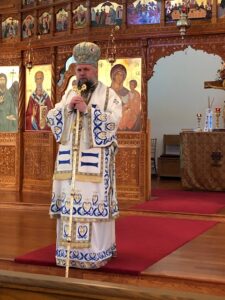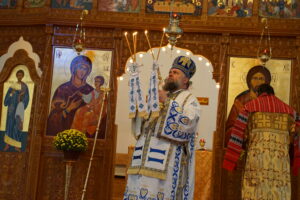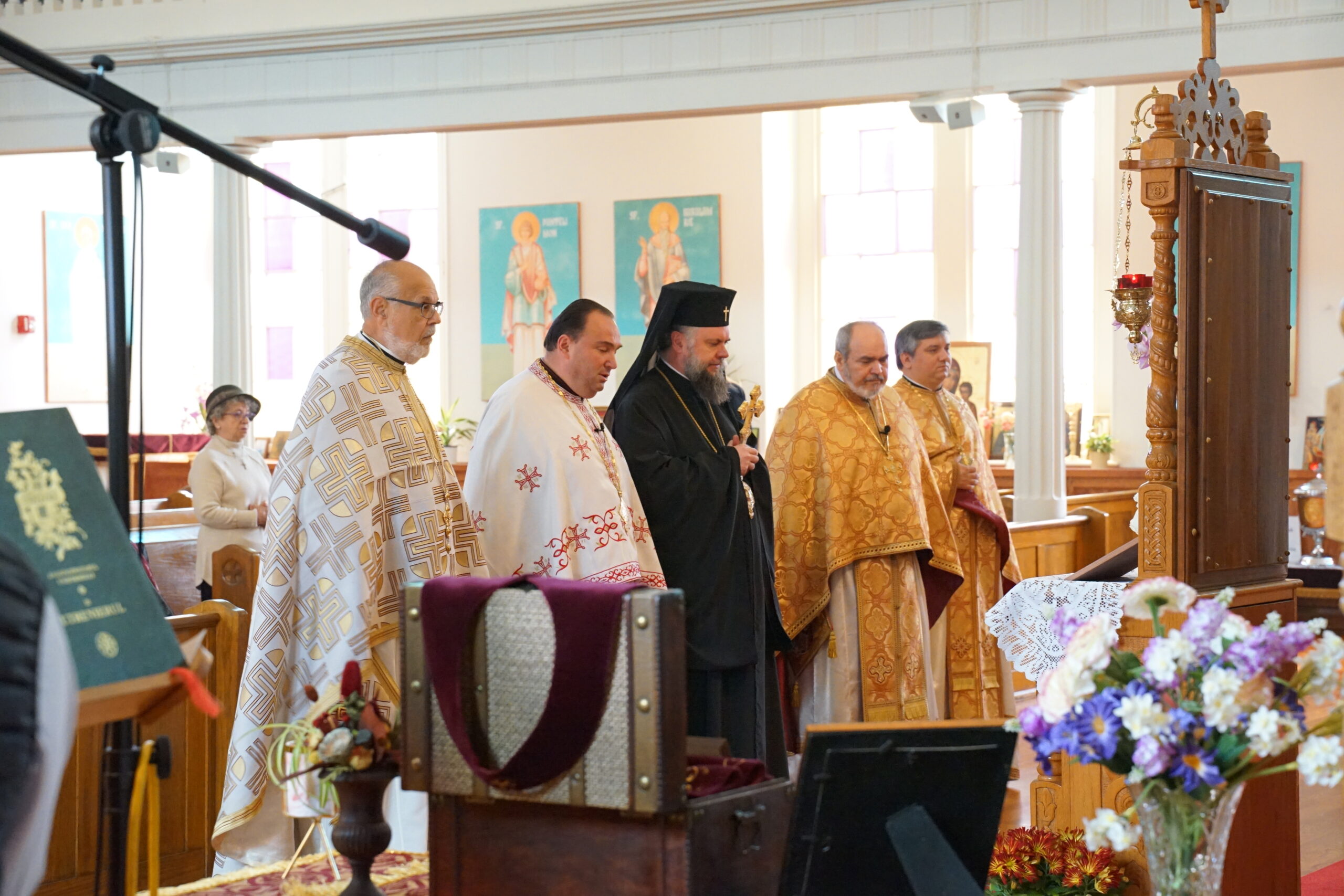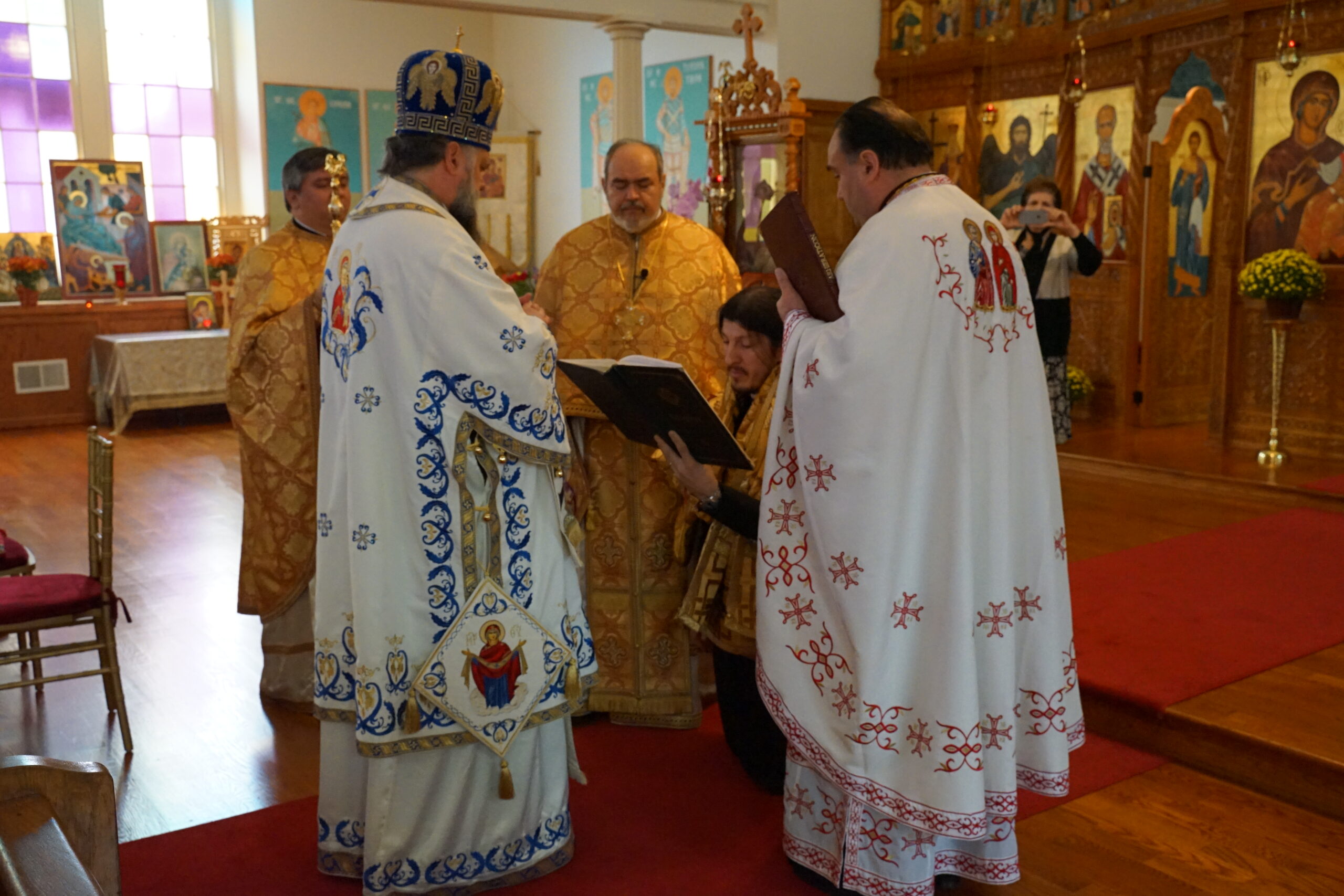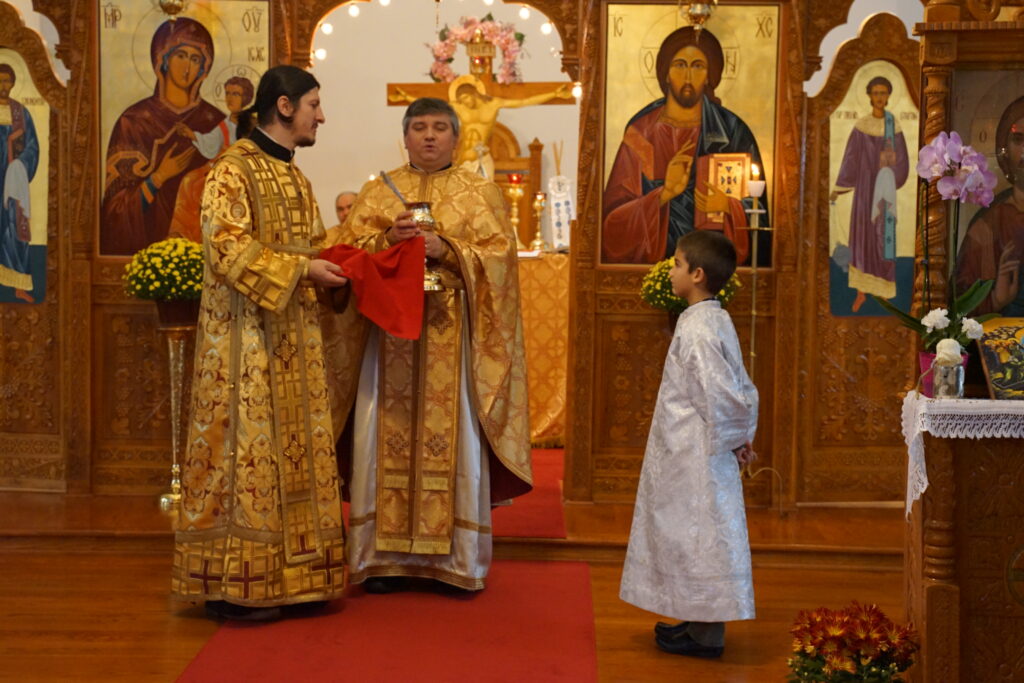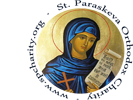
“The love of the Three Divine Persons is the only explanation for the act of creation.”
– Father Dumitru Stăniloae (1903 – 1993)
Recent Events
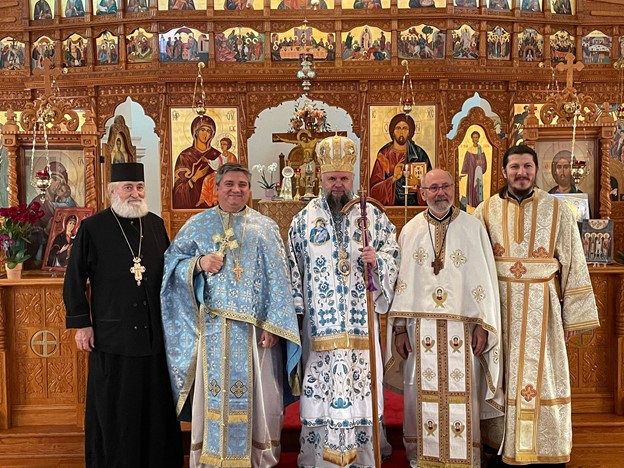
The visit of His Eminence Metropolitan Nicolae
On October 23-24, 2021, the pastoral visit of His Eminence NICOLAE CONDREA, Archbishop of the Romanian Orthodox Archdiocese of the United States of America and Metropolitan of the Romanian Orthodox Metropolitan Church of the Americas, took place.
Upcoming Church & Community Events
11:30am – Sunday School
Saturday, April 20th
4:00 pm – Sacrament of the Holy Unction
Sunday, April 21st (St Mary of Egipt)
11:30 am – Sunday School
11:30 am – Sunday School
The Autumn Patron Saints Feast-Day of Our Holy Trinity Romanian Orthodox Church in Philadelphia
Annually, on October 21, the community of the Romanian Orthodox Parish of the Holy Trinity in Philadelphia celebrates the autumn patron saints feast-day: the Holy Transylvanian Martyrs and Confessors of Orthodoxy.
Matins will begin at 9:00 AM, and the Holy and Divine Liturgy at 10:00 AM.
Our Romanian brethren from the Descent of the Holy Spirit Orthodox Church in Elkins Park, PA, led by the Rev. Father Sabin Pop, as well as other Orthodox priests and believers from churches in and around Philadelphia, are invited.
On the re-consecration of our church, in 2015, a decision was made that the feast of the Holy Transylvanian Martyrs (October 21) should become the second patron saints feast-day of the church. It is a tribute that today’s generation of Romanians in Philadelphia pays to the founders of the Romanian community in Northern Liberties, all Romanian immigrants from Transylvania and Banat, who, at the beginning of the 20th century, could no longer endure the “benefits” of the Austro-Hungarian occupation and had to leave the lands of their dear homeland and emigrate to America.
It is also a tribute to all the defenders of the Orthodox faith in our native Romanian provinces, who have suffered and died for the Orthodox faith. Among them are the Holy Venerable Visarion Sarai and Sofronie of Cioara, the Holy Priests Ioan of Galeș and Moise Măcinic, as well as the Holy Martyr Oprea Miclăuș. They all lived in the 18th century and suffered many torments being condemned by the Habsburg authorities to many years in prison just because they had the courage to defend the Orthodox Church and the right of Romanians to remain Orthodox Christians, as they were born.
Saint Visarion (Besarion) Sarai was born in 1714 and was named Nicolae at his baptism. He became a monk in 1738 at the Saint Sava Monastery. In 1742, he arrived at the Pakra Monastery in Slovenia, and in January 1744 he came to Transylvania and began the fight to defend Orthodoxy.
He was arrested on April 26, 1744 by the imperial authorities, enduring the torments of a long and violent interrogation. He was sent to the prison in Deva, then to those in Timisoara, Osieck and Raab, and finally to the horrific Kufstein prison in the Tyrolean Mountains (Austria), where he died a martyr.
Saint Sofronie (Sophronius) of Cioara was a married parish priest. After his wife died, he decided to become a monk and went to the Monastery of Cozia (in the province of Oltenia, Vallachia), where he entered monasticism. He later returned to his native Transylvania and erected a small monastery on his own property. Because the local authorities destroyed his monastery, he led a popular uprising against the Habsburg authorities and the Greek-Catholic Diocese (United with Rome) in Blaj, which acted as a divisive factor against the Romanian Orthodox Church. In August 1760, Saint Sofronie convened a Synod (a large Assembly) calling for an Orthodox bishop, restitution of churches, release of prisoners, and observance of religious freedom. He died on a date we do not know, either at the Vieroși Monastery or at the Robaia Monastery.
Saint Ioan (John) of Galeș was at the forefront of the movement around the city of Sibiu to defend Orthodoxy, roaming several villages to collect signatures on a document entitled Memorandum, by which the Romanian Orthodox in Transylvania demanded that freedom be granted to the Orthodox faith. The document was handed to Oprea Miclăuș, to be brought to the Imperial Court in Vienna. By order of Empress Maria Theresa, St. John was thrown into the Deva prison, then to Graz and finally to Kufstein. Since the last news about Father John is from 1780, he is believed to have died not long after.
Because he fought against the Uniatism, Saint Moise (Moses) Măcinic was imprisoned in Sibiu for 17 months. Upon his release, he was forbidden to serve as a priest any loger, but to support himself from the field work. He took refuge in Banat, where he met Oprea Miclăuș, whom he accompanied on his travels to Vienna. They were both arrested together with Oprea and thrown into the same terrible prison in Kufstein, where Father Moise died.
Saint Oprea Nicolae, whom his friends called Miclăuș, was originally from the village of Tilișca (in the commune of Săliștea Sibiului). He traveled three times to Vienna to present the complaints of Transylvanian Orthodox Romanians (in 1748, 1749 and 1752). In their memoirs, Romanians demanded freedom for the Orthodox Church and an Orthodox bishop to lead the Diocese of Transylvania. In 1752, while bringing the memorandum to the Imperial Court, he was arrested in Vienna and taken to the Kufstein prison, where he died as a martyr and confessor for Orthodoxy.
The Holy Transylvanian Martyrs Visarion (Besarion) Sarai, Sofronie (Sophronius) of Cioara and Oprea Nicolae (Miclăus) were canonized in 1955, while Saint Ioan (John) of Galeș and Saint Moise (Moses) Măcinic were canonized in 1992.
